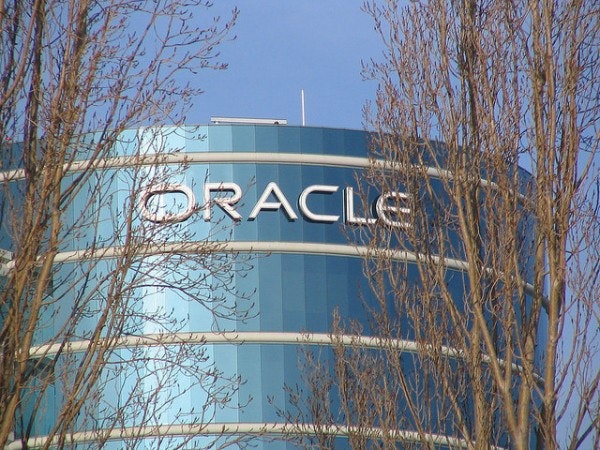Recently, Oracle Corporation (NASDAQ:ORCL) reported less than impressive third-quarter earnings. Hardware systems revenue was down 17% year over year, which is not new for the company. As the decline in hardware revenue accelerates, management still continues to prime the pump for the release of the T5 and M-Series servers, claiming that some of the decline in revenue can be attributed to the fact that customers have been holding off on new purchases in anticipation of the new products.

Software revenue grew at a sluggish 4% from the previous quarter. However, new software licensing and software subscriptions declined 2%, indicating that customers could be opting for alternative products to satisfy their IT needs. The 2% decline could be a significant metric to watch going forward, as the company typically maintains a 7% quarterly average growth rate in this segment.
On a positive note, Oracle Corporation (NASDAQ:ORCL) continues to attract big clients in need of the wide breadth of products and services that it provides. Many corporations have used Oracle as a one stop shop for all of their IT needs, given that the company is so highly diversified in the software and database arenas; however, this exclusivity is working against the company with the evolution of open source cloud computing.
One size doesn’t fit all.
Although Oracle Corporation (NASDAQ:ORCL) maintains a level of dominance in the software industry, techies argue that the company is difficult to work with, citing expensive products and limited flexibility in terms of product selection and support. New companies entering the cloud space are finding ways to capitalize on this discontent by offering flexible open cloud options, that allow customers to mix and match cloud providers with software vendors like Oracle.
Oracle Corporation (NASDAQ:ORCL)’s decision to focus on engineered solutions through their fledgling hardware business has caused them to miss an opportunity to develop a more customer friendly presence in the cloud arena, and that is why they are witnessing the decline in new customer subscriptions.
Red Hat, Inc. (NYSE:RHT) steps in
Red Hat, Inc. (NYSE:RHT) blew Oracle out of the water with the reporting of its’ fourth-quarter earnings. Red Hat has now logged 44 consecutive quarters of revenue growth, but missed the lofty expectations of analysts. The company had a record setting year of 17% revenue growth, generated largely by new customer subscriptions and a mysterious Health Care contract that the company says they were able to convert from a proprietary provider…maybe Oracle?
Red Hat, Inc. (NYSE:RHT) saw significant growth come from the JBoss Enterprise Middleware segment of their product portfolio, and the company now serves 90% of the Fortune 500 companies. Company executives claim that customers are buying into their pay as you go subscription model in order to avoid substantial initial cash outlays to satisfy their IT needs, as this can become a significant line item expense for them. In addition, Red Hat noted that customers are showing willingness to purchase more expensive products as a result of the flexible payment options.
As for sequestration, whichOracle Corporation (NASDAQ:ORCL) partially blamed for their earnings miss, Red Hat, Inc. (NYSE:RHT) disclosed that federal spending on IT services was slower as a result; but the company did not experience any significant headwinds in revenue generation. The company does not expect to lose any contracts with the government, but growth in this segment could slow in the future.
Red Hat anticipates significant revenue generation from OpenStack, but does not expect material revenue inflow from such projects in the near term as the technology is still rather new to the market. In stark contrast to Oracle Corporation (NASDAQ:ORCL), Red Hat, Inc. (NYSE:RHT) has made a rather significant bet on open source cloud computing, and it appears that customers are in favor of the company’s decision to do so.
As mentioned earlier, Red Hat, Inc. (NYSE:RHT) was able to convert a large Health Care company from a proprietary platform to their OpenStack. This was the largest contract of the quarter, and speaks volumes for the excitement the cloud community is feeling regarding open source platforms.
To the cloud and beyond
Red Hat is the second largest contributor to the OpenStack community, outpaced only by Rackspace Hosting, Inc. (NYSE:RAX). Rackspace is a cloud provider that has built its entire business model around the development and proliferation of the OpenStack cloud platform. Although the company missed analyst expectations last quarter, Red Hat’s recent earnings success tells me that there is still great opportunity in the open source cloud industry, in which Rackspace has established a firm foothold.
Rackspace is one large contract away from giving proprietary cloud competitors a run for their money, and is definitely a company to follow as OpenStack takes hold in the market place. Investors looking to capitalize on the cloud revolution would be wise to avoid companies that are slow to adopt innovative changes put on by the likes of Rackspace and Red Hat, Inc. (NYSE:RHT), as the future of IT clearly lies in the Cloud.
The article Red Hat, Oracle, and the Evolution of OpenStack originally appeared on Fool.com and is written by Brian Jordan.
Copyright © 1995 – 2013 The Motley Fool, LLC. All rights reserved. The Motley Fool has a disclosure policy.

